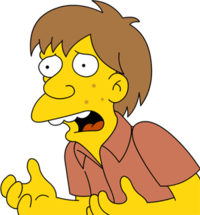
Directed by François Truffaut.
Starring Jean-Pierre Léaud and Claire Maurier.
Starring Jean-Pierre Léaud and Claire Maurier.
In a Nutshell: A young boy is labeled a troublemaker by his parents and teachers.
The 400 Blows is a semi-autobiographical tale about its director, François Truffaut. It is sparse and simply plotted, but not a “coming-of age” that shrugs off misfortune with a veneer of nostalgia. Truffant’s alter ego is Antoine Doinel (Jean-Pierre Léaud), a boy on the cusp of his teen years. A product of impoverished living and inattentive parents, Antoine is unlucky enough to be picked on by his teachers for minor offenses. His attempts to evade trouble (read: lying) and a misguided attempt at homage only dig him a deeper hole. Small acts of childish thievery do not do him much better. Though his story is not that of tragedy, Truffaut effectively brings us closer to Antoine’s troubles and the desire to break free.
The 400 Blows is a semi-autobiographical tale about its director, François Truffaut. It is sparse and simply plotted, but not a “coming-of age” that shrugs off misfortune with a veneer of nostalgia. Truffant’s alter ego is Antoine Doinel (Jean-Pierre Léaud), a boy on the cusp of his teen years. A product of impoverished living and inattentive parents, Antoine is unlucky enough to be picked on by his teachers for minor offenses. His attempts to evade trouble (read: lying) and a misguided attempt at homage only dig him a deeper hole. Small acts of childish thievery do not do him much better. Though his story is not that of tragedy, Truffaut effectively brings us closer to Antoine’s troubles and the desire to break free.
One of the film’s linchpins comes in the debut performance of Jean-Pierre Léaud. While projecting a childish disposition, he has the world-weary gaze and broken spirit of someone much older. It is a deeply natural performance using the impishness and melancholy of youth. As a landmark film of the French New Wave, it is the identification Truffaut felt within cinema that resonates strongest throughout The 400 Blows. One example is the solace Antoine finds in the readings of Honoré de Balzac, mirroring Truffant’s relationship with cinema. Balzac’s words become so ingrained within Antoine that he does not recognize plagiarism when he lifts words for a school paper. Like Godard, Truffaut is playing with our perception of cinema, implying that our experiences and cinema have now become one and the same.
But even without the cinematic subtext, The 400 Blows is effective in its portrayal of the adult carelessness that can leave children in alienation. Antoine may not be the model child, but is unworthy of his teachers’ demonizing and his parents’ immaturity. Truffaut stages the distresses of Antoine’s life with minimal flourish to suggest just how routine everything has become. They cannot understand Antoine’s growing teenage restlessness but the sincerity of Truffaut and Léaud make it heard. The famous closing shot, a still of Antoine’s face after a recent escape, shows an eternally frozen look of the vacant, unfocused rebellion that defined many a childhood. Truffaut would follow Antoine through many chapters of his life, but The 400 Blows continues to stand still in the joy and sorrow of our youth.

No comments:
Post a Comment